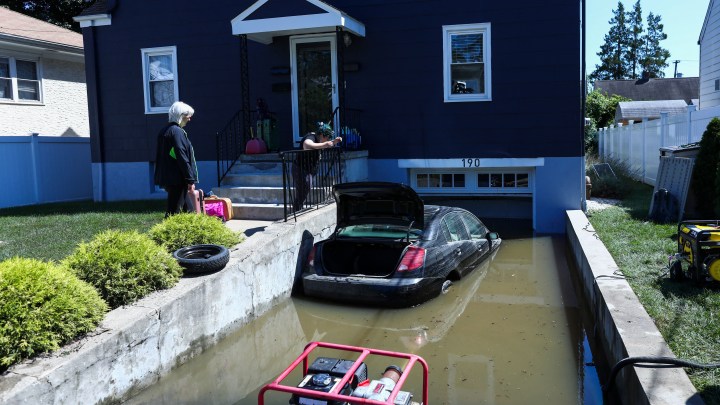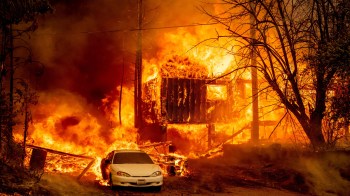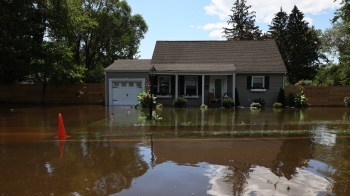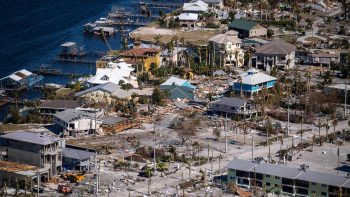
The changing climate is driving up home insurance claims, and rates
The changing climate is driving up home insurance claims, and rates

As the changing climate makes extreme weather more common, more and more people are dealing with damage to their homes and property.
That’s what insurance is for, right? People are certainly filing insurance claims.
In 2020, nearly 40% of all insurance claims were for weather-related damage, according to a new report out from LexisNexis Risk Solutions. That’s the highest percentage since the company started doing this insurance report six years ago.
The total amount insurers had to pay out for weather-related losses rose last year, too.
The more severe storms, fires and floods are, the more people are going to be dealing with damaged roofs and basements.
“And that means that consumers need the protection of insurance more than ever,” said Carolyn Kousky at the Wharton Risk Management and Decision Processes Center at the University of Pennsylvania. But the problem is “those same trends are making it more difficult for insurers to offer coverage, or offer it at a price point that people can afford,” she said.
Big natural disasters have always been a challenge for insurance companies, Kousky said, “because when those events happen, so many people are impacted at the same time, and losses can be so severe that they really have the potential to bankrupt a company.”
But now you’re not only seeing those kinds of events happening more frequently, “you see more and more people moving to those higher risk areas,” said George Hosfield with LexisNexis Risk Solutions, which provides data and analytics for the insurance industry.
That’s because a lot of high-risk areas — like California and the Atlantic coast — are appealing places to live, he said. But those locales may become less appealing in the future when homeowners eye their insurance bills.
“The prices of insurance in those areas, I think, can only stand to continue to go up, and in some cases significantly,” Hosfield said.
Already, “people are paying more for their insurance but getting less protection,” said Amy Bach at the consumer organization United Policyholders.
In fire and hurricane-prone areas, a lot of insurance companies have been raising deductibles and limiting how much they’ll cover.
“Which means we’re seeing more blue tarps, you know, unrepaired roofs, in the aftermath of storms, we’re seeing people getting deeper into debt as they have to find ways to pay for repairs that insurers are not covering,” Bach said.
And she said it means more people are having to rely on the Federal Emergency Management Agency and other government aid to try to rebuild.
There’s a lot happening in the world. Through it all, Marketplace is here for you.
You rely on Marketplace to break down the world’s events and tell you how it affects you in a fact-based, approachable way. We rely on your financial support to keep making that possible.
Your donation today powers the independent journalism that you rely on. For just $5/month, you can help sustain Marketplace so we can keep reporting on the things that matter to you.


















